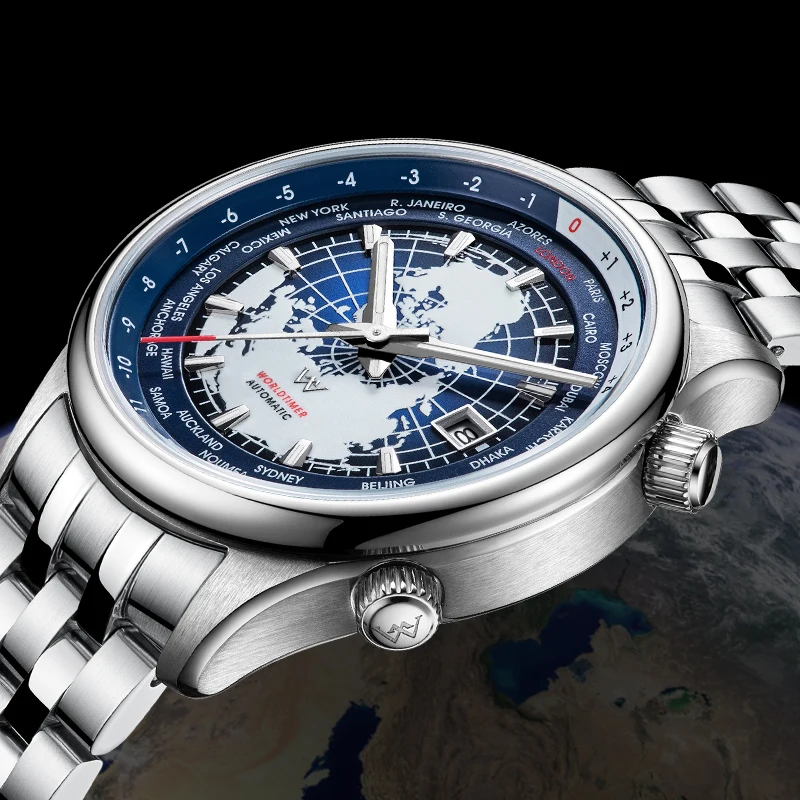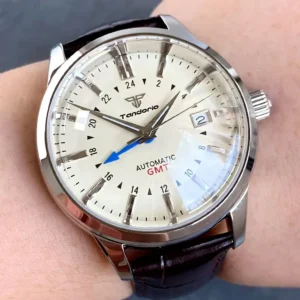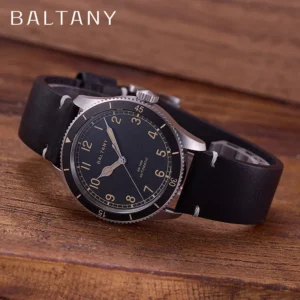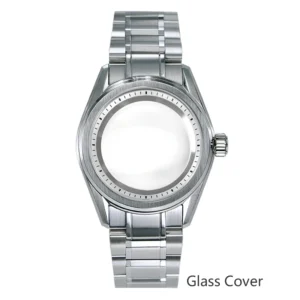Introduction: Understanding Greenwich Mean Time
Greenwich Mean Time (GMT) represents the mean solar time at the Royal Observatory in Greenwich, London. As the world’s first globally adopted time standard, GMT has played a pivotal role in creating order from the temporal chaos that once existed when each town and city followed their local time.
While modern timekeeping has introduced even more precise standards, GMT remains a crucial reference point for global time coordination and continues to influence how we organize our increasingly interconnected world. This enduring time standard maintains particular significance in fields like navigation, aviation, and global communications.
For watch enthusiasts and collectors, GMT holds special meaning as it represents one of horology’s most practical complications. Mechanical timepieces with GMT functionality connect wearers to a rich tradition of precision timekeeping that has shaped history’s dive watch engineering and exploration.
In this comprehensive guide, we’ll explore what GMT is, how it functions as a global time reference, its historical significance, and why it continues to matter in our digital age.
The Prime Meridian: Where East Meets West
The Prime Meridian is an imaginary line running from the North Pole to the South Pole, passing through the Royal Observatory in Greenwich, London. This line marks zero degrees (0°) longitude and serves as the reference point from which all other longitudes are measured, effectively dividing our planet into Eastern and Western hemispheres.
Visitors to the Royal Observatory can stand on the physical representation of this important line—a brass strip embedded in the courtyard pavement. This creates the unique opportunity to place one foot in the Eastern Hemisphere and one in the Western Hemisphere simultaneously, capturing the literal moment where east meets west.
The establishment of Greenwich as the location for the Prime Meridian wasn’t merely a matter of geographical convenience. It represented the culmination of centuries of scientific advancement and international diplomacy. Prior to this standardization, navigation at sea was fraught with danger as sailors struggled to determine their precise longitudinal position.
The Prime Meridian’s selection as the international standard for measuring longitude transformed global navigation and laid the groundwork for time standardization across the planet. This development parallels other significant advances in timekeeping that revolutionized how humans interact with time, similar to the timeline of diving watch innovations that transformed underwater exploration.
How GMT Works as a Global Time Reference
Greenwich Mean Time functions as the baseline from which all other time zones around the world are calculated. At its core, GMT represents “mean solar time”—a time standard based on the average length of a day, smoothing out the slight variations that occur in actual solar days throughout the year.
Here’s how GMT creates a framework for global timekeeping:
- GMT serves as the zero point (or “time zero”) from which all other time zones are calculated
- Time zones around the world are expressed as offsets from GMT (GMT+/- hours)
- Each 15 degrees of longitude represents approximately one hour of time difference
- Moving eastward from Greenwich adds hours (+), while moving westward subtracts hours (-)
This relationship between longitude and time is fundamental to understanding how GMT works. The Earth rotates 360 degrees in 24 hours, which means it turns 15 degrees per hour. Therefore, a location 15 degrees east of Greenwich will experience solar noon approximately one hour before Greenwich does.
For instance, when it’s noon GMT, it’s approximately 7:00 AM in New York (GMT-5) and 9:00 PM in Tokyo (GMT+9). This standardized system allows for clear GMT functions across timezones and creates predictable time relationships worldwide.
The elegance of this system lies in its simplicity—by agreeing on a single reference point, the international community created a functional framework for coordinating activities across vast distances, something that was previously impossible when each locality operated on its own solar time.
GMT vs. UTC: Understanding Critical Differences
While many people use GMT and UTC (Coordinated Universal Time) interchangeably in casual conversation, important technical differences exist between these time standards that matter in scientific and precision-critical applications.
GMT is based on astronomical observations—specifically, the mean solar time at the Greenwich meridian. UTC, on the other hand, is based on extraordinarily precise atomic clocks that measure time using the vibrations of atoms. This fundamental difference in how time is measured creates several important distinctions:
| Feature | GMT | UTC |
|---|---|---|
| Basis | Astronomical (Earth’s rotation) | Atomic (cesium atom vibrations) |
| Precision | Variable (affected by Earth’s irregular rotation) | Extremely precise and stable |
| Leap Seconds | Not applicable | Added periodically to account for Earth’s rotation variations |
| Primary Use | Historical standard, general reference | Scientific applications, computer systems, official time |
The most notable difference is UTC’s use of leap seconds. Because the Earth’s rotation is gradually slowing, UTC occasionally adds a second (called a leap second) to keep atomic time synchronized with astronomical time. For example, when a leap second is added, the clock might read 23:59:60 before moving to 00:00:00 of the next day—something that never happens in normal timekeeping.
For most everyday purposes, the difference between GMT and UTC is negligible. However, for systems requiring precise synchronization—like global navigation satellite systems, financial transactions, or scientific experiments—these distinctions become crucial.
Watch enthusiasts interested in timepieces that display multiple time zones might want to explore our collection of GMT automatic watches that allow wearers to track both local time and GMT simultaneously.
The Historical Evolution of GMT
The story of GMT begins with the dangerous challenge of determining longitude at sea. Without accurate means to establish east-west positioning, ships frequently became lost, resulting in countless maritime disasters and significant economic losses.
In response to this crisis, the British government established the Royal Observatory at Greenwich in 1675 specifically to solve the “longitude problem.” The observatory’s mission was to create astronomical tables that would help sailors determine their position at sea through celestial observations.
GMT’s journey to becoming a global standard began with British railways in the 1840s. Before standardization, each town maintained its own local time based on the sun’s position, creating scheduling chaos for the expanding railway network. To solve this problem, railway companies adopted Greenwich time as their standard, creating “Railway Time” that eventually became the legal standard time throughout Britain.
The international adoption of GMT came in 1884 at the International Meridian Conference in Washington, D.C. Representatives from 25 nations voted to establish Greenwich as the Prime Meridian, making GMT the global reference for time zones. This decision wasn’t without controversy—France abstained from the vote and continued to use Paris time for several more decades.
Throughout the late 19th and early 20th centuries, countries around the world gradually adopted time zones based on GMT offsets. This standardization mirrored other technological advances of the era, much like the evolution of dive watch technology that progressed alongside maritime exploration needs.
By the mid-20th century, atomic clocks introduced unprecedented timekeeping precision, leading to the development of UTC as the new scientific standard. While GMT remains in common usage, UTC has become the official international time standard for most scientific and technical applications.
GMT’s Role in Navigation and Maritime History
The “longitude problem” that plagued maritime navigation for centuries was effectively solved through GMT and the development of reliable marine chronometers. Before this innovation, sailors could determine their latitude (north-south position) relatively easily by measuring the angle of the sun or stars above the horizon, but determining longitude (east-west position) remained elusive.
The breakthrough came with the understanding that time and longitude are directly related. By comparing local noon (when the sun is at its highest point) with the time at Greenwich (maintained on a chronometer), navigators could calculate their longitudinal position. Every hour of time difference represented 15 degrees of longitude.
John Harrison’s H4 chronometer, completed in 1759, revolutionized maritime navigation by maintaining Greenwich time accurately even during long sea voyages. This technological marvel allowed ships to determine their position with unprecedented accuracy, dramatically improving maritime safety and efficiency.
The calculation worked as follows: If a ship determined local noon to be 2:00 PM according to their chronometer set to Greenwich time, the navigator would know they were 30 degrees west of Greenwich (2 hours × 15 degrees per hour).
This vital connection between timekeeping and navigation safety explains why precision watches became essential tools for sailors and explorers. The legacy of this maritime heritage continues in modern timepieces, particularly in the history of professional diving watches evolution where accurate timekeeping can be a matter of life or death.
Even in today’s era of GPS and satellite navigation, GMT remains embedded in maritime tradition and navigational systems that continue to reference Greenwich as their fundamental meridian.
Modern Applications and Uses of GMT
Despite the development of more precise time standards, GMT continues to serve important functions in numerous fields:
Aviation: Pilots and air traffic controllers worldwide use “Zulu Time” (military term for GMT/UTC) to avoid confusion when flying across multiple time zones. This standardization is crucial for flight planning, coordination, and safety, as explored in our article about the vital role of universal time in aviation.
Meteorology and Weather Forecasting: Weather observations and forecasts are typically synchronized to GMT to ensure consistency in global weather modeling and prediction. Meteorological stations worldwide record observations at standardized GMT hours.
Broadcasting: International broadcasters like the BBC World Service historically used GMT for program scheduling, ensuring audiences worldwide knew exactly when to tune in regardless of their local time.
Financial Markets: Trading hours and transaction timestamps often reference GMT/UTC to provide clarity in international finance, especially for transactions spanning multiple time zones.
Computing and Telecommunications: Server logs, internet protocols, and network time synchronization often use GMT/UTC as their reference, ensuring consistent timestamps regardless of server location.
Current Usage as a Time Zone: Several countries and territories—primarily in West Africa including Ghana, Sierra Leone, and parts of the UK during winter months—continue to use GMT as their official time zone.
These diverse applications demonstrate GMT’s enduring relevance even as more precise timekeeping standards have emerged for scientific applications.
GMT in the World of Horology
In the realm of fine mechanical watches, GMT functionality represents one of the most practical and sought-after complications. GMT watches allow wearers to track multiple time zones simultaneously—a feature that originated with the needs of pilots and has evolved into an essential tool for international travelers and business professionals.

A typical GMT watch features an additional hand that makes one complete rotation every 24 hours (rather than 12), allowing it to track a second time zone. This hand is often designed to stand out visually with a distinctive color or arrow-shaped tip. When paired with a 24-hour bezel, some GMT watches can track a third time zone as well.
Watch enthusiasts distinguish between two main types of GMT complications:
“True GMT” (Traveler’s GMT): The local hour hand can be adjusted independently while the GMT hand maintains reference time. This design is ideal for travelers changing time zones, as they can quickly adjust local time without affecting the reference time.
“Caller GMT” (Office GMT): The GMT hand can be adjusted independently while the main hands show local time. This configuration is perfect for those who stay in one time zone but regularly communicate with people in different time zones.
For professionals who work in maritime environments, GMT dive watches combine water resistance with multi-timezone functionality, making them versatile tools for both underwater exploration and international travel.
Setting a GMT watch typically involves:
1. Setting the main hands to local time
2. Adjusting the GMT hand to point at the corresponding hour on the 24-hour scale for your reference time zone
3. For watches with rotating bezels, turning the bezel to align with a third time zone if needed
This elegant mechanical solution to tracking multiple time zones continues to be relevant in our digital age, combining practical functionality with horological craftsmanship.
GMT and Time Zones: A Practical Guide
Converting between GMT and other time zones is a straightforward process once you understand the basic principles. Here’s how to approach time zone conversions with confidence:
To convert from GMT to a local time zone:
– For time zones east of Greenwich: Add the number of hours in the UTC/GMT offset (GMT+5 means add 5 hours)
– For time zones west of Greenwich: Subtract the number of hours in the UTC/GMT offset (GMT-5 means subtract 5 hours)
For example, if it’s 3:00 PM GMT:
– In New York (GMT-5): 3:00 PM – 5 hours = 10:00 AM
– In Tokyo (GMT+9): 3:00 PM + 9 hours = 12:00 AM (midnight)

When dealing with Daylight Saving Time (DST), remember that the GMT offset changes temporarily. For instance, London moves from GMT+0 in winter to GMT+1 (British Summer Time or BST) in summer. Always verify whether DST is in effect when making time zone calculations.
A common source of confusion is the international date line. When converting across this invisible boundary in the Pacific Ocean, remember to adjust the date accordingly. If it’s Monday 3:00 PM GMT, it’s already Tuesday morning in locations like Tokyo and Sydney.
For those who regularly communicate across time zones, consider creating a simple reference chart with common locations and their time differences from your local time. This approach can help avoid scheduling mishaps and ensure effective global efficiency across multiple time zones.
Automatic Chronograph Watches, Chronograph Pilot Watches
Price range: $233.36 through $237.58 Select options This product has multiple variants. The options may be chosen on the product pageClassic Automatic Dress Watches, GMT Automatic Watches, GMT Pilot Watches
Price range: $1,240.86 through $1,463.33 Select options This product has multiple variants. The options may be chosen on the product pageClassic Automatic Dress Watches, GMT Automatic Watches, GMT Dive Watches
Price range: $468.93 through $552.94 Select options This product has multiple variants. The options may be chosen on the product pageClassic Pilot Watches, Military Inspired Automatic Watches
$561.00 Select options This product has multiple variants. The options may be chosen on the product pageGMT Automatic Watches, Unique Automatic Watches
$420.10 Select options This product has multiple variants. The options may be chosen on the product pageClassic Field Watches, Classic Pilot Watches, Rugged Automatic Watches, Titanium Automatic Watches
Price range: $425.24 through $496.28 Select options This product has multiple variants. The options may be chosen on the product page
For frequent travelers or professionals working in international contexts, GMT pilot watches provide a practical wearable solution for tracking multiple time zones without reaching for a phone or calculator.
Frequently Asked Questions About GMT
Is GMT still the official world time standard?
No, Coordinated Universal Time (UTC) has replaced GMT as the primary international time standard for scientific and technical purposes. However, the term “GMT” remains in common usage, and for most practical purposes, GMT and UTC can be considered equivalent (though they differ slightly due to UTC’s leap seconds).
Which countries currently use GMT as their time zone?
Several West African countries including Ghana, Sierra Leone, Guinea, and Côte d’Ivoire use GMT year-round. The United Kingdom and Ireland use GMT during winter months, switching to GMT+1 (British Summer Time/Irish Standard Time) during summer.
Why was Greenwich chosen as the location for the Prime Meridian?
Greenwich was selected primarily because the British Royal Observatory was already established there and was producing highly accurate astronomical data. Additionally, at the time of the 1884 International Meridian Conference, the British Empire was a dominant global power with extensive maritime interests, and many maps and charts already used Greenwich as a reference point.
What is the relationship between GMT and 24-hour time?
GMT is typically expressed using the 24-hour clock format to avoid AM/PM confusion. For example, 3:00 PM in 12-hour format would be expressed as 15:00 GMT in the 24-hour format.
How does GMT relate to the International Date Line?
The International Date Line is approximately at the 180° longitude mark (opposite the Prime Meridian). When crossing the date line heading eastward, you move back one calendar day; when crossing westward, you move ahead one calendar day. This arrangement ensures a consistent dating system around the globe relative to GMT.
What is meant by “Zulu Time” in aviation and military contexts?
“Zulu Time” is simply another name for GMT/UTC in aviation and military operations. It comes from the phonetic alphabet where “Z” is represented by “Zulu.” Time zones around the world are labeled with letters, and the zero or reference time zone (GMT) is denoted by “Z” or “Zulu.”
For pilots and aviation enthusiasts, our collection of automatic pilot watches includes timepieces designed with these professional timekeeping considerations in mind.
GMT’s Enduring Legacy in a Digital Age
From its origins as a solution to the perilous longitude problem to its current status as a fundamental reference point in global timekeeping, Greenwich Mean Time has traveled an extraordinary journey. What began as a practical tool for maritime navigation evolved into the world’s first truly global standard—a remarkable achievement that helped synchronize human activity across continents.
Today, even with atomic clocks and satellite navigation systems providing unprecedented precision, GMT’s influence persists. The meridian line at Greenwich, now a UNESCO World Heritage site, draws visitors from around the world who come to stand at “the center of time”—a physical place that represents humanity’s quest to measure and master temporal dimensions.
In fields ranging from aviation to telecommunications, terminology derived from GMT remains embedded in professional practices. Whether it’s pilots referencing “Zulu time” or programmers dealing with timestamp standards, GMT’s legacy continues to shape how we coordinate activities in our interconnected world.
For horology enthusiasts, GMT represents more than just a time standard—it embodies the harmonious marriage of practicality and tradition that defines fine mechanical watchmaking. The ability to track multiple time zones on a mechanical watch speaks to both the ingenuity of watchmakers and the enduring utility of this complication, especially for those navigating time zones with GMT watches.
As we increasingly rely on digital devices that automatically adjust to our local time, the knowledge of GMT and its significance might seem less relevant. Yet understanding this fundamental reference point provides valuable insight into how we’ve organized our world and created order from the natural cycles of our planet’s rotation.
Greenwich Mean Time stands as a testament to how a practical solution to a specific problem—determining longitude at sea—can evolve into a global system that transcends its original purpose and continues to influence how we experience and measure time in our modern world.







